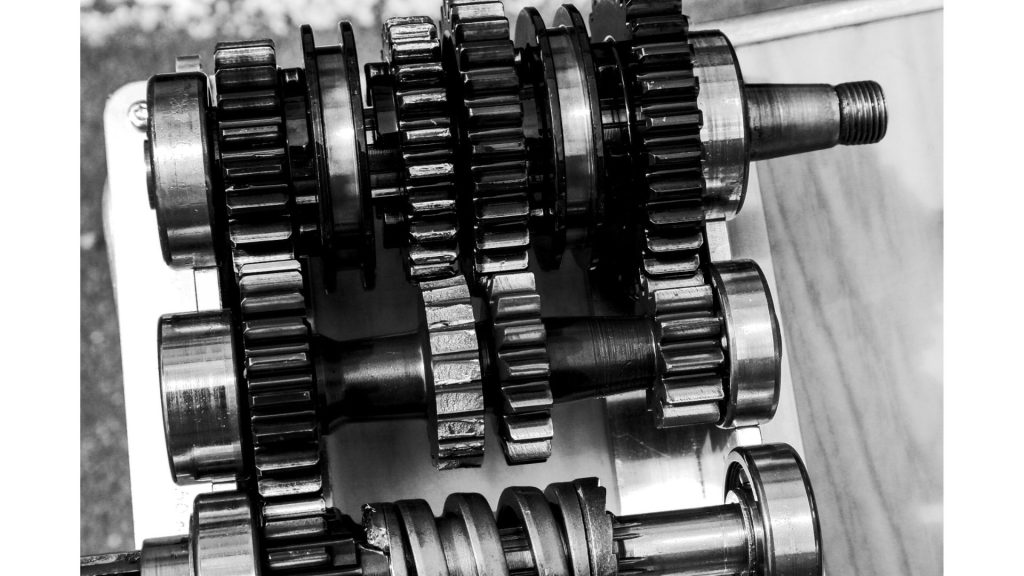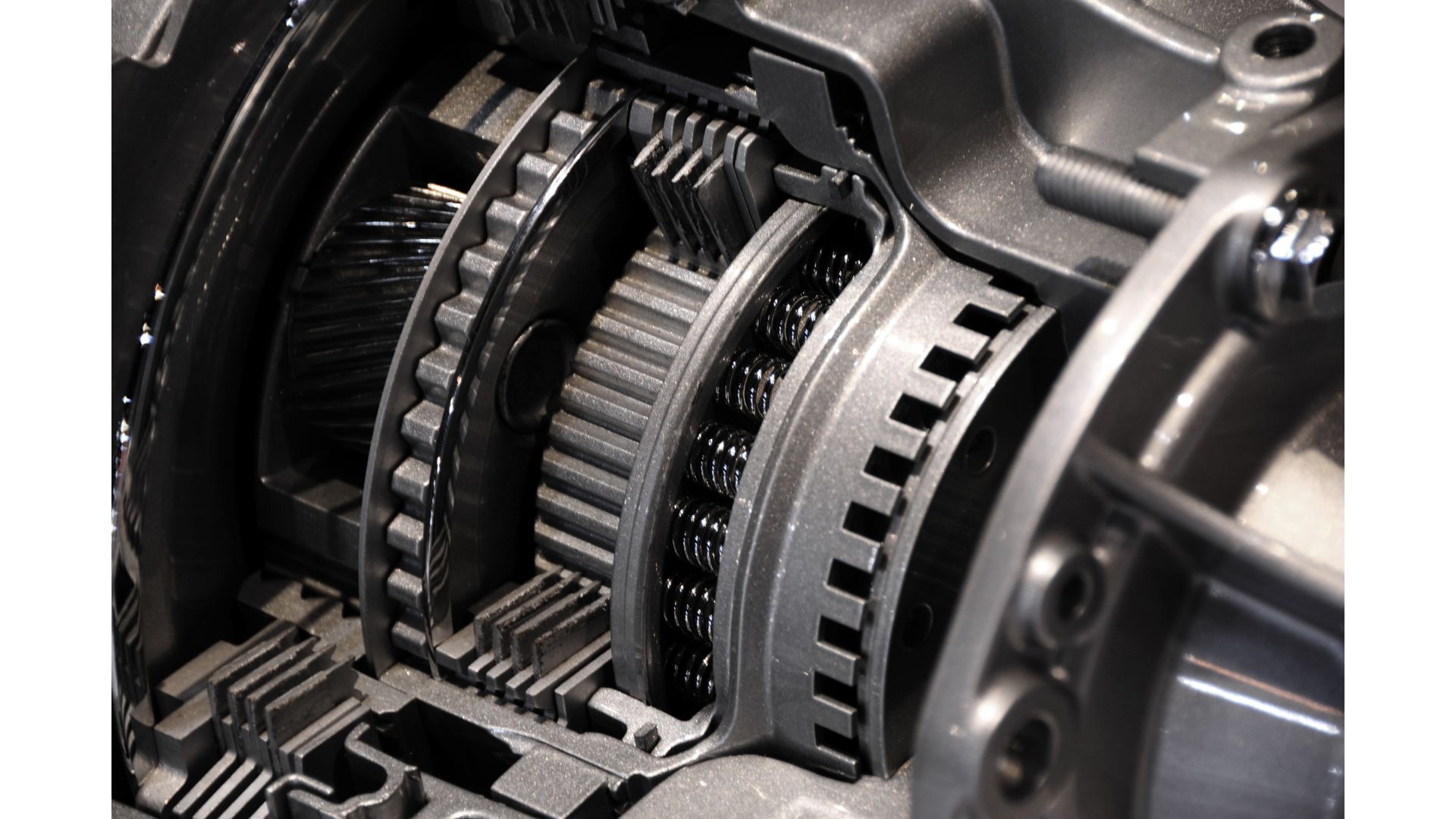| CHEVY SILVERADO MODEL | TRANSMISSION COST + LABOR COST |
| 1995 | $5000 – $6,200 |
| 2001 | $3,000 – $5,000 |
| 2008 | $3,500 – $5,000 |
| 2009 | $3,500 – $5,000 |
| 2013 | $4,900 – $5,900 |
| 2015 | $3,500 – $6,500 |
| 2016 | $4,100 – $5,900 |
| 2017 | $5,000+ |
| 2018 | $5,400 – $6,600 |
The transmission allows your vehicle to move by transferring energy from the engine to the wheels.
Manual transmissions require the driver to shift the gears manually to alter the speed. Automatic transmissions perform this task without manual input. You also have continuously variable transmissions that optimize performance and efficiency by changing power delivery to fit the driving conditions.
As you can see, the transmission is a vital component of your vehicle’s operations. Once it develops a fault, the car will manifest various troublesome symptoms, including the following:
- The car will generate grinding sounds whenever you shift the gears.
- You will encounter resistance whenever you attempt to shift the gears.
- Transmission fluid will leak. You may notice a burning smell depending on where the leak occurs.
- Some cars have a light that comes on when the transmission fails.
- You will notice delays in the vehicle’s response whenever you shift the gears. Accidents may occur because the car is not accelerating or slowing down on cue.
- The vehicle may jerk unexpectedly.
A mechanic can diagnose these symptoms to identify the factors responsible for compromising the transmission’s work. According to Lenfer Automotive and Transmission, the transmission control module can fail.
This component typically responds to the driver’s actions when they use the pedals and shift the gears. Your mechanic may also identify a failure in the torque converter, leading to a transmission fluid leak.
The mechanic will only provide a quote after diagnosing the problem. Your biggest concern is the cost of the transmission. Bowman Chevy puts the price tag somewhere between $1,800 and $3,400. Usually, labor costs are a concern. And in truth, you may spend as much as $1,200 on labor alone.
But in this case, the transmission’s price tag is the biggest hurdle. If you can secure a new transmission, you shouldn’t have a problem finding a mechanic to install it at a reasonable price. Once you have a new transmission, take the necessary steps to extend its lifespan. That includes the following:
- Perform routine maintenance.
- Check and change the transmission fluid routinely.
- Change the transmission filter regularly (Every 30,000 – 50,000 miles).
Is It Worth Replacing A Chevy Silverado Transmission? Or Can I Repair It?

Choosing between repairing and replacing a transmission is not easy. The following factors will influence your decision:
1). Repair Costs
You know that replacing a transmission can cost as much as $5000. But what about the cost of repairing the transmission? You’re looking at $1,500 or less. The final figure will depend on the following variables:
- What Problem Are You Trying To Fix?
Is it a simple fluid leak or something more significant? Have you noticed overheating? Do the malfunctions reoccur? The more severe the fault, the more money you will spend on repairs.
- What Type Of Transmission Do You Have?
Automatic transmissions cost more to repair because of their complexity.
- Vehicle Type
Some vehicles are so rare that you must return them to the manufacturer to repair the transmission. This is a problem because you typically spend more on repairs, especially if your local dealership needs to order the parts you need.
You have less to worry about if you see cars like yours on the road every day. The same cannot be said for unique models with specialized transmissions that only a handful of mechanics in the world understand.
- Age
You would expect newer cars to present a more significant challenge where repairs are concerned. However, older models are more annoying because their parts are challenging to find. In some cases, the manufacturer no longer makes the parts. You must rely on a second-hand retailer to find replacement components.
Ultimately, repairing a transmission is not easy. This system has too many pieces. Therefore, don’t be surprised if the labor costs skyrocket. That being said, if the repair costs are cheaper than the replacement costs, go with the repair option.
2). How Old Is Your Car?
Age matters because you don’t want to buy a new transmission for an old car you intend to replace. Repairs make more sense if you want to sell an older vehicle within the next few months.
You can replace the transmission if you intend to use the car for a few more years. Although, a brand-new transmission in an ancient vehicle won’t make sense.
3). Value
This goes without saying. You can’t spend $5000 on a new transmission when you bought your car for $3,000 or less. If the cost of a new transmission is higher than the value of the vehicle, buy a new car or repair the old transmission.
4). What Type Of Damage Did The Transmission Incur?
The severity will determine your next step. Some transmissions can’t be fixed. In other cases, you can perform repairs, but the transmission will never deliver the optimal performance you want.
Annoying symptoms such as grinding sounds will persist until you get a replacement. You also have transmissions that malfunction every other week. The mechanic will tell you what to expect. If they can restore the transmission to its original state, repair it.
If the mechanic can repair the transmission but they expect frequent failures to occur in the future, you should get a replacement. The mechanic will provide options, but you must make the final decision.
The mechanic will only step in if you make a dangerous decision that exposes you and other drivers on the road to potentially fatal accidents.
5). Rebuild
What if you don’t want to repair or replace the transmission? A decent mechanic can rebuild the transmission. This involves taking the transmission apart and checking every component. You clean and re-install all the healthy parts.
Repair, refurbish, or replace the damaged pieces. You don’t have to wait for a malfunction to occur to rebuild a transmission. You can do this for an older vehicle to boost its performance or to raise the vehicle’s value before selling it.
Naturally, this takes time because you’re trying to build the transmission from the ground up. The labor costs will increase dramatically unless you have the technical knowledge to rebuild the transmission yourself.
But even if you know enough to perform this task, you should ask a technician to test your work to be on the safe side.
Tips To Make Transmission Last Longer
- Perform maintenance. You don’t have to wait for a pre-planned checkup. Take the vehicle to a mechanic whenever you notice concerning symptoms, such as stiff gears and grinding sounds.
- Some mechanics recommend flushing the transmission to remove debris. Don’t forget that friction shaves slivers off the clutch. You can’t trust the magnet in the transmission pan to collect these shavings.
- It isn’t enough to check the transmission fluid. Make sure you’re using the correct transmission fluid type. Ask the manufacturer for a recommendation. You should also use the right amount.
- Don’t overwork the transmission. First of all, try to take breaks on long trips. Secondly, don’t haul heavy loads. And if you must carry heavy loads, stay within the manufacturer’s recommended towing capacity.
- Ask a certified transmission specialist to inspect the transmission at least once a year. Technically, a regular maintenance routine is sufficient. But you can go the extra mile by finding a transmission specialist. They can discover abnormalities conventional mechanics typically miss during maintenance.
- Don’t shift from ‘Drive’ to ‘Reverse’ while the vehicle is moving. Wait for it to come to a complete halt before shifting to reverse. Additionally, you should apply the correct gear. Don’t allow individuals that can’t change the gears skillfully to drive your car.
- Don’t rest your foot on the break. This habit increases the transmission’s wear and tear.

